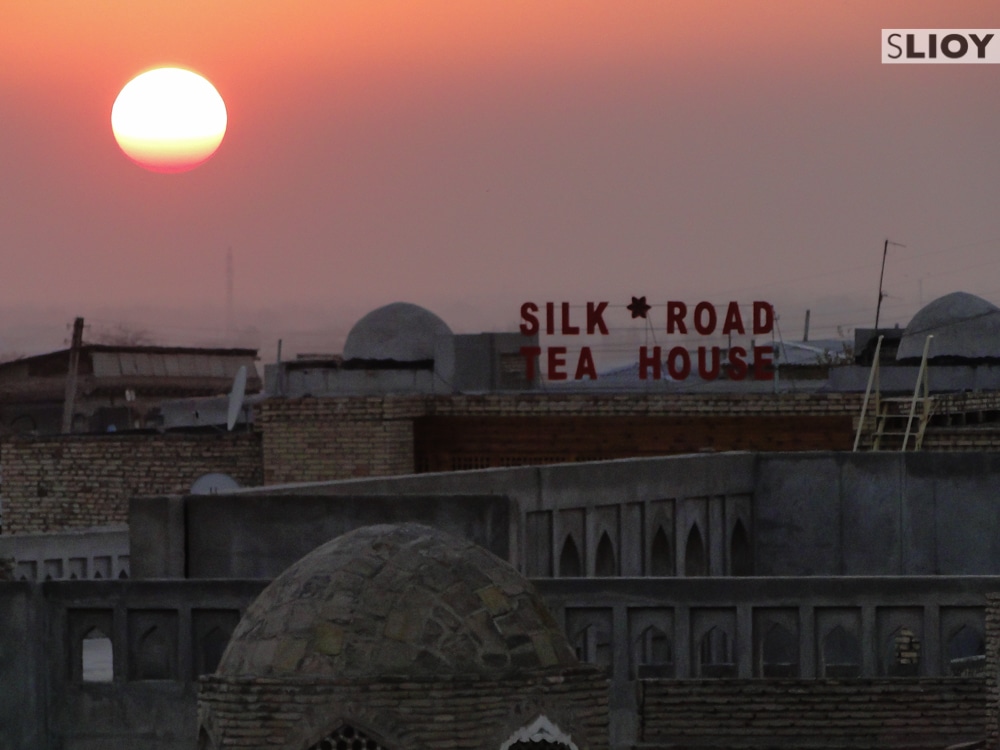Ask GoMad Nomad:
Solo Travel on the Silk Road?
This month’s Ask GoMad Nomad column comes from longtime reader Heidi, whose question concerns a region near and dear to several of the writers behind GoMad Nomad: Central Asia and the Silk Road.
I recently decided that I want to travel the Silk Road from China to Europe. I want to take the train as much as possible and visit archaeological sites. I want to spend at least two months doing it, so that I don’t have to rush through it. Do you have recommendations on reputable travel agencies that do small group Silk Road tours? I’m also open to traveling solo, if it isn’t too difficult logistically speaking. Any insight would be much appreciated. Thank you! – Heidi R.
Heidi poses a good question, and one that I think represents a concern of many travelers that are considering a trip along the Silk Road and especially through the Central Asia region. This area, which sees far fewer travelers (independent or otherwise) than regions like SouthEast Asia and Europe, is often an unknown for potential visitors and solid info can be hard to come by. With an incredible mix of history and cultures, however, it’s an area that is well worth exploring for those that don’t mind a bit of adventure mixed in with their travels.
Solo travel in the region may be a bit intimidating for novice travelers, but for those with a bit of experience it is most certainly within reach. One of the largest hurdles is undoubtedly the relative lack of English speakers compared to regions like SouthEast Asia and Europe. Learning a bit of Mandarin would be an asset in China, while in Central Asia and Russia the very basics of Russian will come in handy. Even without these, however, a bit of pantomime and a lot of patience are often enough to cover the basic daily necessities (as, really, in any country) and the resulting follies are themselves often worth the effort. [Have you ever tried to ask somebody where the bathroom is when you don’t share a language? In my experience, at least one of you will be laughing by the end of it!]
Also worth noting is that many of the countries that cover the ancient Silk Road require visas for tourists – the notable exception being Kyrgyzstan, which many travelers use as a base to collect the rest of the necessary visas for the -Stans. [See our updated Guide to Central Asia Visas.] Of particular note is Iran, which for US/Canada/UK passports requires a guided tour to visit. Russia and China require some bureaucratic hoops be jumped through and, in the end, are always going to be easiest to obtain in your home country before you set off for your trip.
To address Heidi’s question specifically, a two-month trip along the Silk Road by train would probably look something like:
China -> Kazakhstan -> Uzbekistan -> Kazakhstan – > Russia
Train routes are extremely limited in the rest of the region (excepting Turkey, which has a wide network but few international connections) where minibuses and shared cars are more often the norm.
Additionally, for a traveler like Heidi whose primary interest is in historic architecture and archaeological sites, Uzbekistan should very much be a focal point. The Registan complex in Samarkand gets the most accolades, but further afield Khiva and Bukhara are each worth a visit to the country on their own and the desert fortresses of the Elliq Qala in Uzbekistan’s Khorezm region (pictured above) run the gamut from Zoroastrian towers of silence to 4th century defensive fortifications.
For a more nature-focused trip Kyrgyzstan and Mongolia are don’t-skip additions to the itinerary, while Tajikistan and Iran both hit a nice mix of archaeology and scenic landscapes. For those short on time but still looking for a Silk Road experience, the western regions of China are a solid bet all in themselves. From Xi’An and Jiayuguan to the cities of Turpan and Kashgar in Xinjiang province, parts of which often feel more similar in culture to the Turkic -Stans than to capital city Beijing. Turkmenistan is an experience all its own, and though it can be expensive to visit it certainly makes for interesting travel.
The idea of the ‘Silk Road’ is actually a fairly nebulous concept, given the wide number of branches and side-paths that were at some point involved in the historic trade routes that cut across Asia. Most importantly, then, is to choose an itinerary that speaks to your interests – and make sure to leave a bit of extra time for when unexpected adventures crop up. You never know when you’ll stumble across a surprise festival in the Uzbek desert or the ‘Nomad Olympics‘ on the Kyrgyz Seashore!
So what do you think? Is your very own Silk Road adventure in the works? Leave a note in the comments and tell us which areas interest you most!
Thanks to Heidi for reaching out. We’re always stoked to help fellow travelers with any concerns – you can get in touch with our contact form or by sending an email to GoMadNomadTravelMag (at) gmail (dot) com. We look forward to hearing from you!





